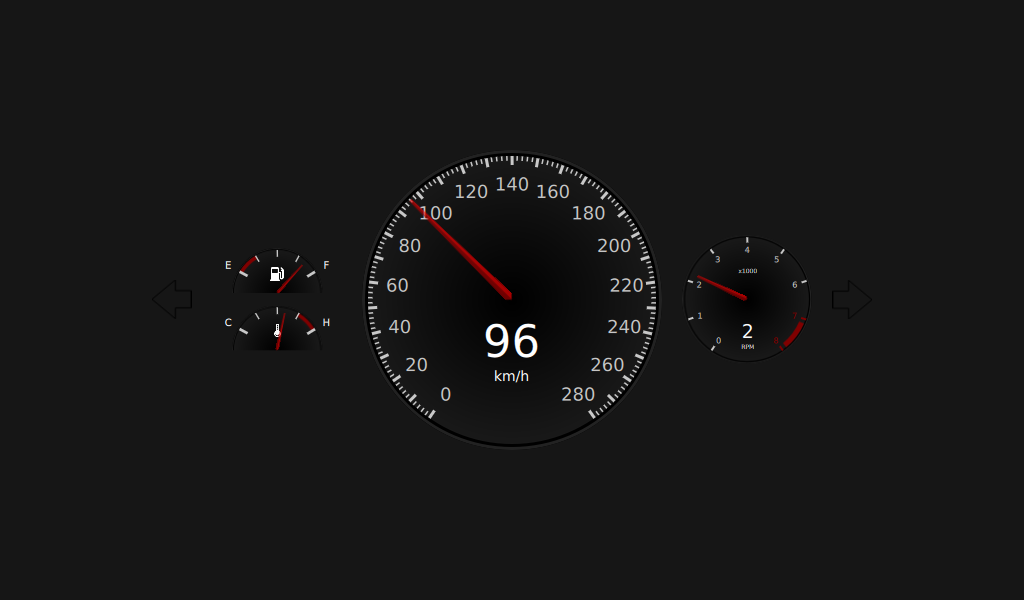
A car dashboard created using several CircularGauge controls.

This example project demonstrates the use of CircularGauge to create a car dashboard.
The ValueSource type generates random data for testing the dashboard. The data is random but there is a logical link between some of them, for example, kph and rpm.
Item { id: valueSource property real kph: 0 property real rpm: 1 property real fuel: 0.85 property string gear: { var g; if (kph == 0) { return "P"; } if (kph < 30) { return "1"; } if (kph < 50) { return "2"; } if (kph < 80) { return "3"; } if (kph < 120) { return "4"; } if (kph < 160) { return "5"; } } property int turnSignal: gear == "P" && !start ? randomDirection() : -1 property real temperature: 0.6 property bool start: true
It runs a looping SequentialAnimation that sets the values of the properties over time.
The SequentialAnimation object consists of several ParallelAnimation objects, which in turn consist of two
NumberAnimations, one for kph and one for rpm. Both let the value develop to a certain value over a specified duration with the Easing type Easing.InOutSine
ParallelAnimation { NumberAnimation { target: valueSource property: "kph" easing.type: Easing.InOutSine from: 0 to: 30 duration: 3000 } NumberAnimation { target: valueSource property: "rpm" easing.type: Easing.InOutSine from: 1 to: 6.1 duration: 3000 } }
The flashTimer object switches the turn signals on or off.
Timer { id: flashTimer interval: 500 running: on repeat: true onTriggered: flashing = !flashing }
The paintOutlinePath(ctx) method does the actual painting of the arrow for the turn signal.
function paintOutlinePath(ctx) { ctx.beginPath(); ctx.moveTo(0, height * 0.5); ctx.lineTo(0.6 * width, 0); ctx.lineTo(0.6 * width, height * 0.28); ctx.lineTo(width, height * 0.28); ctx.lineTo(width, height * 0.72); ctx.lineTo(0.6 * width, height * 0.72); ctx.lineTo(0.6 * width, height); ctx.lineTo(0, height * 0.5); }
The screen consists of a foregroundCanvas and a backgroundCanvas. foregroundCanvas displays the green turn signal if the on and flashing booleans are
true.
Canvas { id: foregroundCanvas anchors.fill: parent visible: on && flashing onPaint: { var ctx = getContext("2d"); ctx.reset(); paintOutlinePath(ctx); ctx.fillStyle = "green"; ctx.fill(); } }
Files:
Images:

As part of the free Business evaluation, we offer a free welcome call for companies, to talk about your requirements, and how the Felgo SDK & Services can help you. Just sign up and schedule your call.
Sign up now to start your free Business evaluation:

